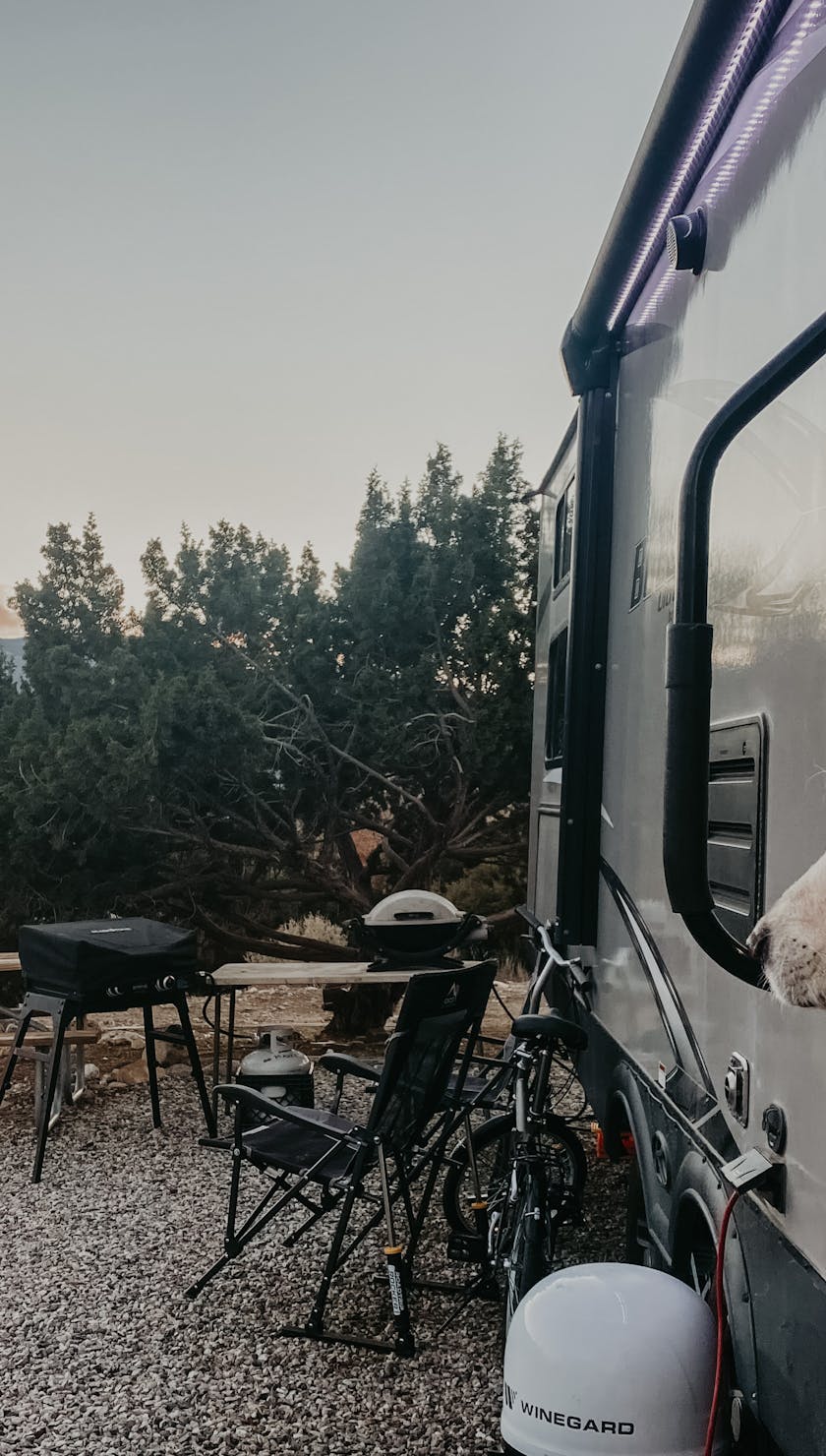One of the first things every RVer needs to learn is how to properly connect their rig to campground utilities. Done correctly, RV hookups make life on the road convenient and comfortable. Done wrong… well, let’s just say no one wants to deal with a sewer mishap or a blown circuit! Whether you’re a first-timer or looking to refine your routine, this guide will walk you through the proper steps for handling water, electric, and sewer hookups like a pro.
Connecting to Fresh Water
Ensuring safe and clean water starts with these key steps:
- Use a potable water hose (not a regular garden hose) to connect your RV to the campground water spigot.
- Attach a water pressure regulator to prevent damage to your RV plumbing. Some campgrounds have high water pressure that can cause leaks.
- Use an inline water filter to improve water quality and remove contaminants.
- Turn on the water slowly and check for leaks before fully opening the valve.
- Store your hose properly in a separate compartment from the sewer hose to avoid cross-contamination.
A water pressure regulator is your best friend—unless you enjoy surprise leaks!"
Hooking Up to Electricity
Avoid electrical issues with these essential tips:
- Check the power pedestal rating (30-amp or 50-amp) before plugging in. Use a surge protector to protect your RV’s electrical system.
- Always turn off the campground breaker before plugging in your RV.
- Use a voltage monitor to ensure the power supply is stable and within safe limits.
- Secure the power cord to prevent tripping hazards and ensure a stable connection.
- Turn on the breaker after plugging in, then check your RV’s electrical system to ensure everything is working properly.
Always turn off the breaker before plugging in—unless you want an unexpected fireworks show!"
Handling Sewer Hookups
This is where things can go terribly wrong if not done properly! Follow these steps for a clean and efficient waste management process:
- Always wear disposable gloves when handling your sewer hose.
- Connect the sewer hose to your RV first, then to the dump station or sewer inlet. Make sure the connections are secure.
- Use a sewer hose support to maintain a downward slope and ensure smooth drainage.
- Dump the black tank first, followed by the gray tank to help flush out any residue.
- Close the valves and rinse the sewer hose thoroughly before disconnecting and storing it separately from fresh water hoses.
Dump black first, gray second—because no one wants to rinse with yesterday’s dinner."
Pro Tips for Hookup Success
- Carry extra hoses and adapters in case the campground connections are further away than expected.
- Inspect connections regularly for leaks, wear, or damage.
- Use an odor-control treatment in your black tank to keep smells at bay.
- Know the campground’s specific rules for water, electric, and sewer usage to avoid surprises.
Mastering RV hookups is a crucial skill that ensures a stress-free camping experience. By following these steps, you’ll prevent common mistakes and keep your setup safe and efficient. Whether it’s your first time or your hundredth, a well-executed hookup routine makes life on the road smoother and more enjoyable.
What’s your best RV hookup tip? Share your experience at IamKeystoneNation@KeystoneRV.com or tag us on social media using #KeystoneRV and #CampBetter!
